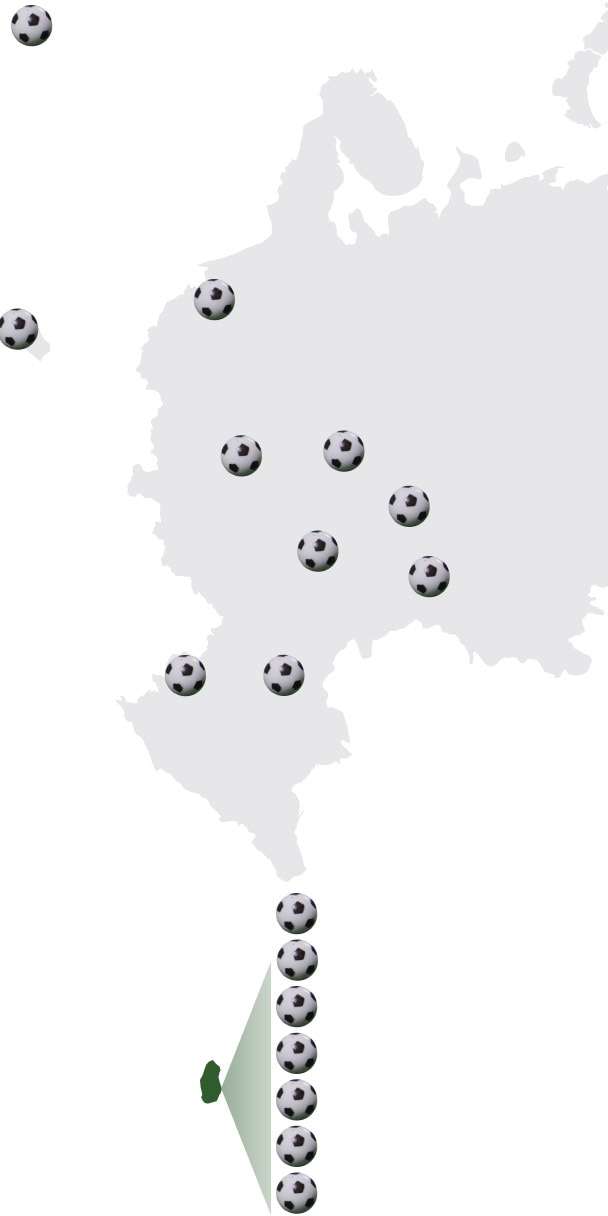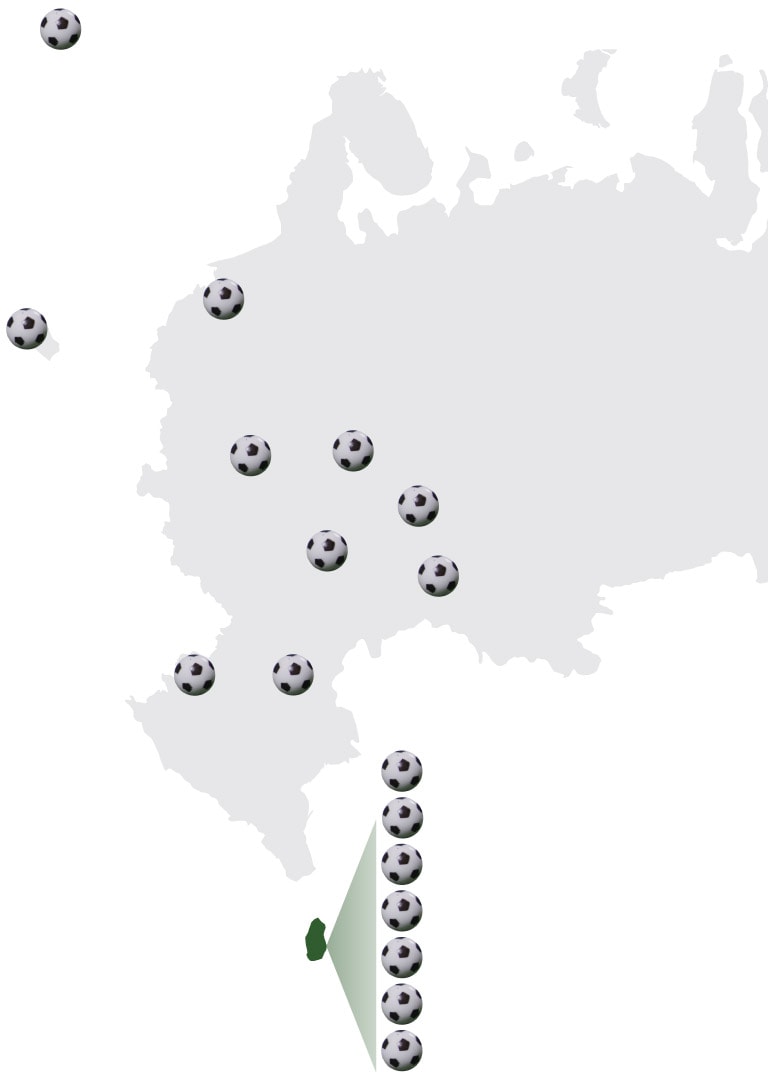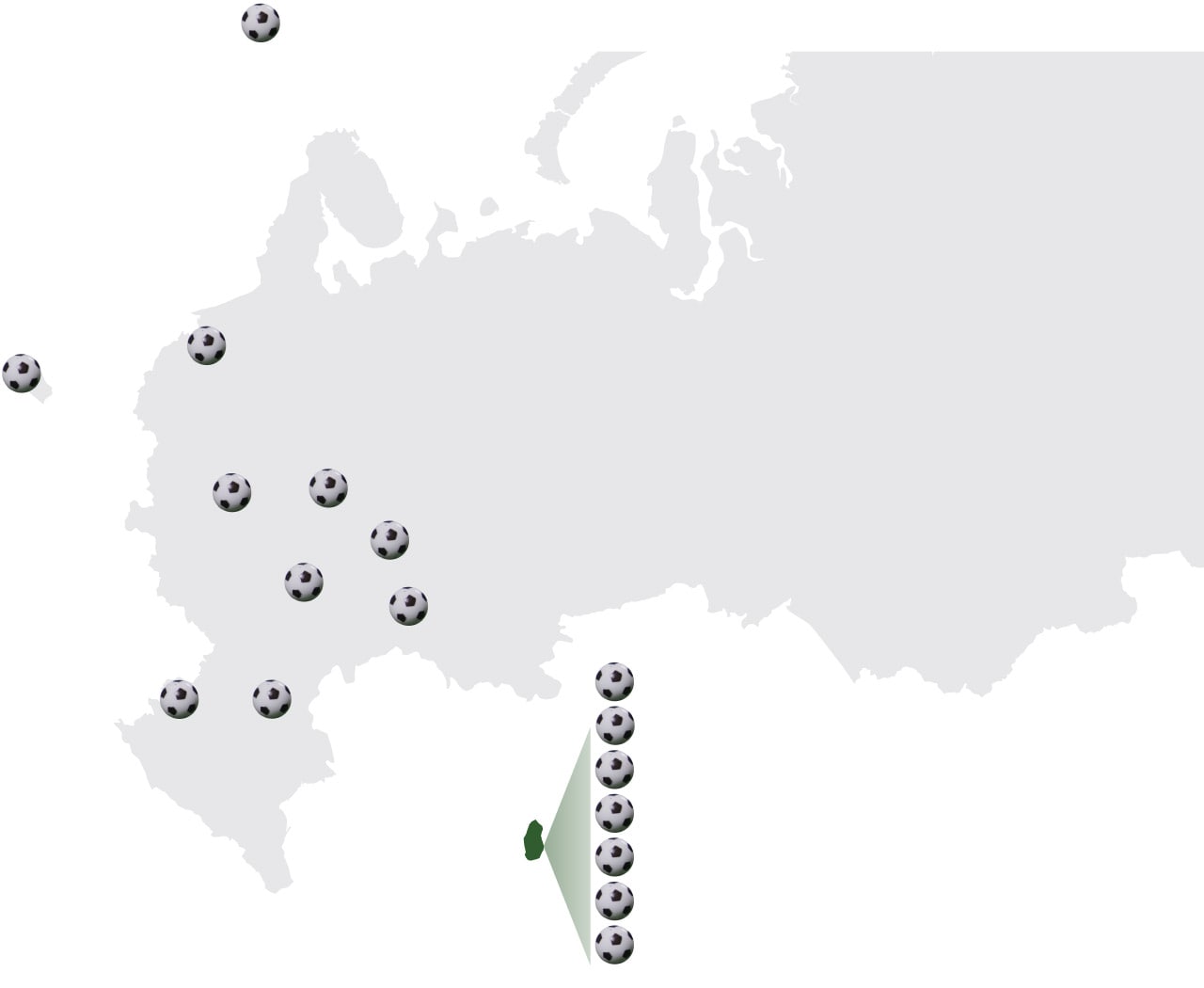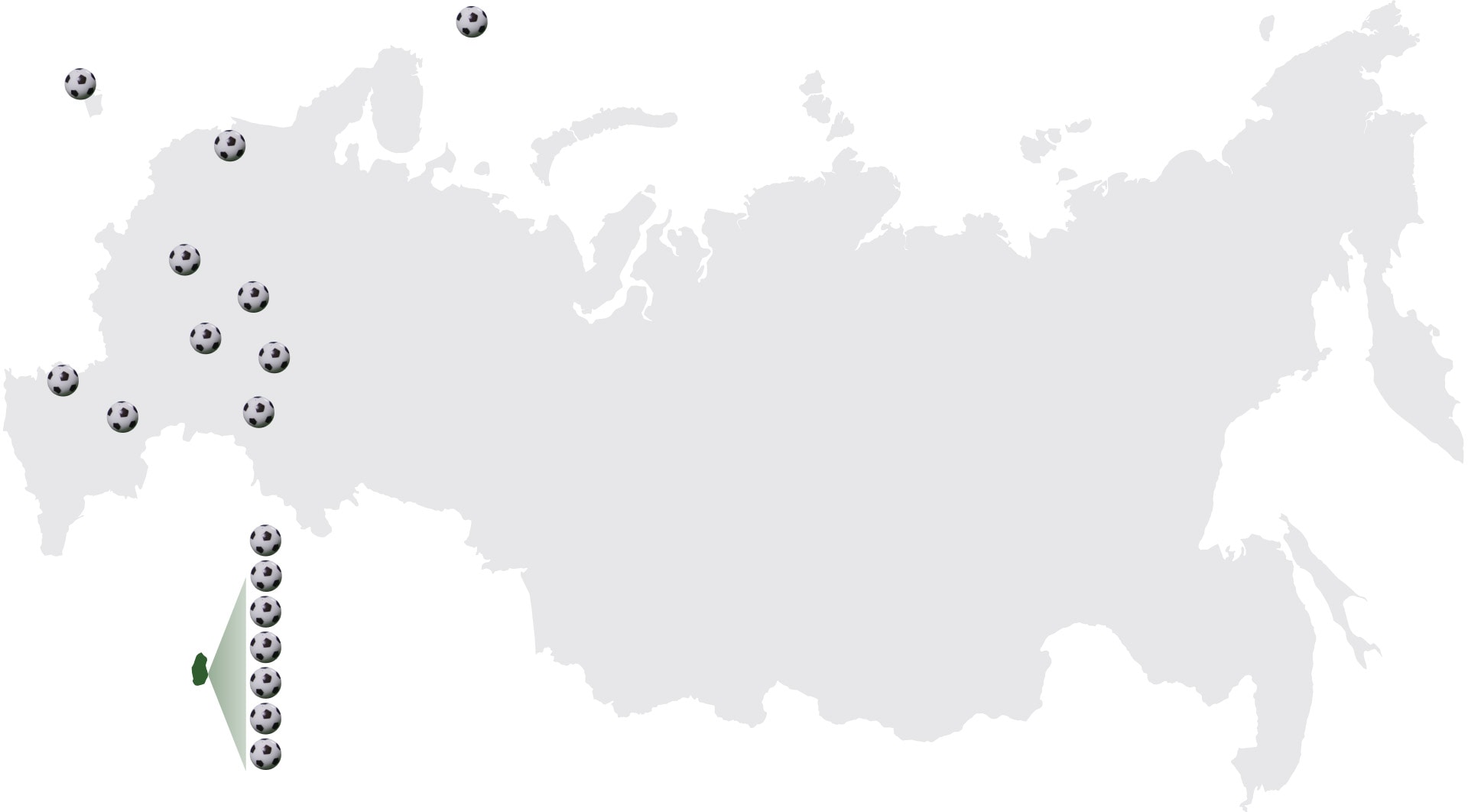Qatar is the smallest country ever to host the FIFA World Cup. It is dwarfed by recent hosts Russia and Brazil and by the 2026 host — the entire continent of North America.
Fitting the World Cup into tiny Qatar
At times, the matches have saddled parts of the capital, which already suffered from traffic congestion, with a paralyzing snarl, as was the case Tuesday, when police struggled to ease congestion around the Education City Stadium after Tunisia and Denmark played. On Wednesday evening, Morocco’s supporters flooded one of the subway lines, but the mood was festive, despite the crush. In one subway car, a group of fans gathered around a man holding a cellphone and watching Japan upset Germany, 2-1.
It was no easy feat to squeeze one of the world’s biggest sporting events into one of its smallest countries. We sought to visualize just how remarkable the task was using, what else? Soccer balls.
Qatar is just over 4,400 square miles — that’s roughly the size of Connecticut. Russia, which hosted the World Cup in 2018, is more than 6.3 million square miles — fifteen hundred times the size of Qatar. And Brazil, which hosted in 2014, is more than 3.2 million square miles — 727 times the size of Qatar.
Even Switzerland, the smallest country to host the tournament before Qatar, is more than 3 times the size of the present host.
Despite the cramped quarters, more than 1 million people are expected to converge on the country of 2.9 million, increasing the population by more than one-third.
So where do they all stay? Some are staying in hotels charging more than $1,000 a night. Others are staying in cruise ships docked near Doha. And for those who can’t afford either of these options, there are less expensive apartments available as well as ad hoc shelters where accommodation costs around $200 a night.
Visitors are also staying in neighboring gulf countries and commuting in for the games. But once in Qatar, traveling between stadiums is easier than in past World Cup tournaments.

Brand new
stadiums built
for the World Cup
St. Petersburg
Stadium
Kaliningrad
Stadium
2018 World Cup
Spartak Stadium
Nizhny Novgorod
Kazan Arena
Mordovia Arena
Samara
Arena
Volgograd
Arena
Rostov
Arena
Al Bayt Stadium
Lusail Stadium
Ahmad Bin Ali Stadium
Education City Stadium
Stadium 974
2022 World Cup
Al Thumama Stadium
Al Janoub Stadium

Brand new stadiums built for the World Cup
Kaliningrad
Stadium
St. Petersburg Stadium
2018 World Cup
Spartak Stadium
Nizhny Novgorod Stadium
Kazan Arena
Mordovia Arena
Samara Arena
Volgograd
Arena
Rostov
Arena
Al Bayt Stadium
Lusail Stadium
Ahmad Bin Ali Stadium
Education City Stadium
Stadium 974
2022 World Cup
Al Thumama Stadium
Al Janoub Stadium

Brand new stadiums built for the World Cup
Kaliningrad
Stadium
St. Petersburg Stadium
2018 World Cup
Spartak Stadium
Nizhny Novgorod Stadium
Kazan Arena
Mordovia Arena
Samara Arena
Al Bayt Stadium
Volgograd
Arena
Lusail Stadium
Rostov
Arena
Ahmad Bin Ali Stadium
Education City Stadium
Stadium 974
2022 World Cup
Al Thumama Stadium
Al Janoub Stadium

Brand new stadiums built for the World Cup
Kaliningrad Stadium
St. Petersburg Stadium
Spartak Stadium
Nizhny Novgorod Stadium
Mordovia
Arena
Rostov
Arena
Kazan Arena
Samara Arena
Volgograd
Arena
2018 World Cup
Al Bayt Stadium
Lusail Stadium
Ahmad Bin Ali Stadium
Education City Stadium
Stadium 974
2022 World Cup
Al Thumama Stadium
Al Janoub Stadium
Distances between arenas at Russia’s World Cup spanned up to 1,500 miles — a day-long journey by train. In Qatar, the farthest one has to travel is less than 40 miles from the center of Doha. Al Bayt Stadium, a 40 minute drive north of the capital and designed like a desert tent, requires a trip to the end of one metro line, and a 25-minute bus ride followed by a 15 minute walk.
The tight squeeze at this World Cup have led to some innovative solutions: Stadium 974, which seats 40,000 people, is built out of shipping containers, meant to be dismantled when the event in Qatar has ended and be sent to other countries hoping to host their own tournaments.
“This is certainly remarkable, to build a temporary stadium,” said Danyel Reiche, a visiting associate professor of political science and international relations at Georgetown University Qatar. Reiche also is co-author of the book “Qatar and the 2022 FIFA World Cup: Politics, Controversy, Change.”
“Here the Qataris are addressing the issues more than others,” he said.
Qatar built seven new stadiums to host the games. Some pay tribute to its cultural hallmarks: Glistening white walls evoke the country’s past as a pearl-diving hub; swooping curves represent the traditional dhow sailboat.
But constructing the infrastructure for the games came with a high human toll.
Ninety-five percent of the country’s workforce is made up of migrants, according to Human Rights Watch, most of them from South Asia and Africa working in the construction or service industries for low wages. Qatar was the target of international condemnation as workers engaged in construction leading up to the tournament toiled in brutal heat for meager pay. Human rights groups say thousands died or suffered life-changing injuries since preparations began 12 years ago.
“It’s important to remember what migrant workers have been through to be able to deliver this, to allow us to enjoy these games,” said Hiba Zayadin, a senior researcher in the Middle East and North Africa division of Human Rights Watch.
Kareem Fahim in Doha contributed to this report.






